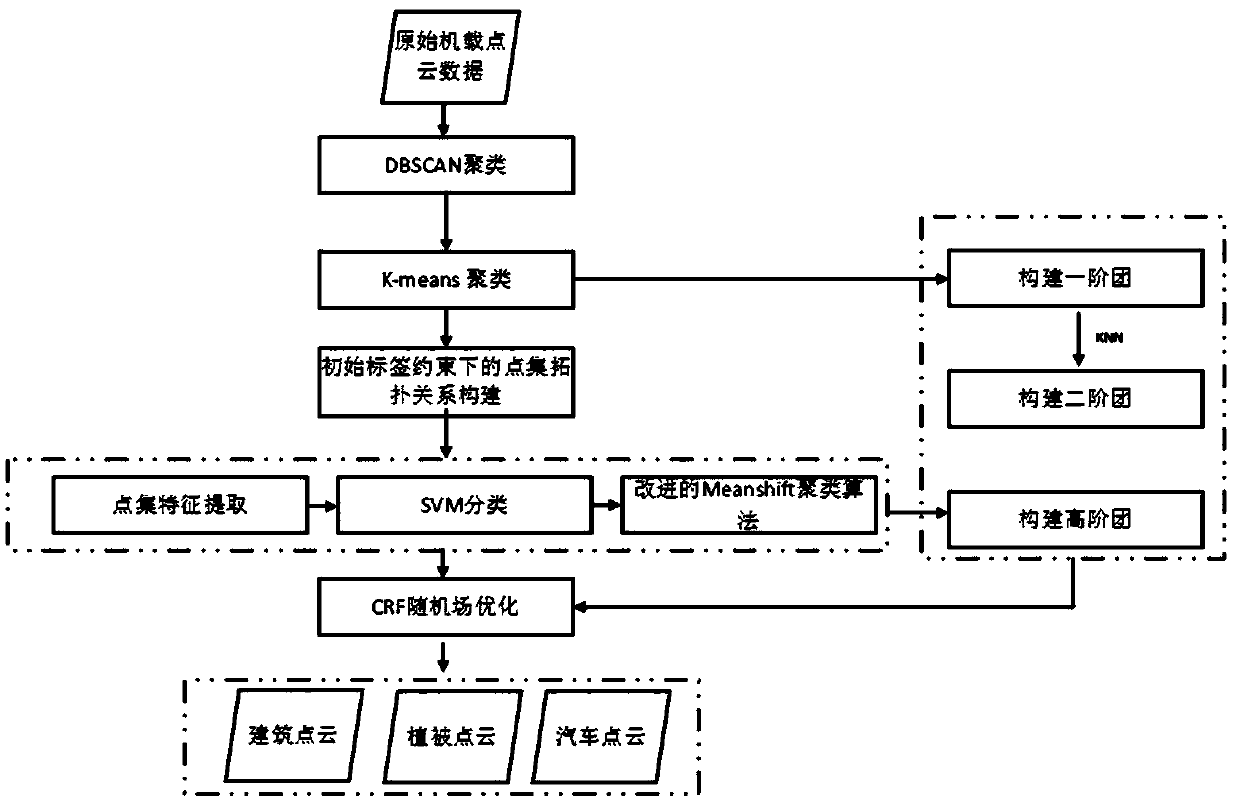Airborne laser point cloud classification method based on high-order conditional random field
A conditional random field, airborne laser technology, applied in computer parts, instruments, character and pattern recognition, etc., can solve the problems of poor segmentation robustness, ineffective segmentation, and low single-point classification accuracy.
- Summary
- Abstract
- Description
- Claims
- Application Information
AI Technical Summary
Problems solved by technology
Method used
Image
Examples
Embodiment Construction
[0094] The technical solution of the present invention will be further described below in conjunction with the accompanying drawings.
[0095] Such as figure 1 The shown airborne laser point cloud classification method based on high-order conditional random fields, first integrates DBSCAN (Density-Based Spatial Clustering of Applications with Noise) to cluster point clouds into relatively large-sized point sets according to density and connectivity ; Secondly, use K-means clustering to over-segment the point cloud into point cloud objects; then use the improved MeanShift algorithm to construct the topological relationship of the point cloud objects generated by K-means. The construction of this topological relationship requires the initial point cloud object classification label as a constraint. For this reason, the SVM of the present invention performs initial classification on each point cloud object to obtain the initial classification result of the point cloud. With this a...
PUM
 Login to View More
Login to View More Abstract
Description
Claims
Application Information
 Login to View More
Login to View More - R&D
- Intellectual Property
- Life Sciences
- Materials
- Tech Scout
- Unparalleled Data Quality
- Higher Quality Content
- 60% Fewer Hallucinations
Browse by: Latest US Patents, China's latest patents, Technical Efficacy Thesaurus, Application Domain, Technology Topic, Popular Technical Reports.
© 2025 PatSnap. All rights reserved.Legal|Privacy policy|Modern Slavery Act Transparency Statement|Sitemap|About US| Contact US: help@patsnap.com



